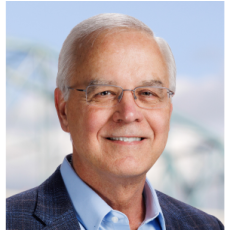Having seen a number of events in your long and successful career working in logistics in North America, how would you describe this pivotal moment for U.S. logistics post-COVID?
For decades, I have seen the same issues discussed repeatedly, such as the need for better agility, visibility and real-time information throughout the supply chain. Now, we are finally seeing these problems being addressed effectively.
The COVID pandemic highlighted significant issues within the supply chain that were not as apparent before. Even prior to COVID, the "Amazon effect" was already shifting the logistics landscape by increasing the demand for faster delivery times. When COVID hit, the fragility of these optimized, just-in-time supply chains became evident as they struggled to meet the sudden surge in demand for rapid delivery. This crisis accelerated industry advancements in technology and automation, particularly in conjunction with AI and machine learning, enabling the supply chain to adapt and evolve more efficiently.
COVID acted as a catalyst for change, pushing the logistics industry to adopt and implement advanced technologies that have been in the pipeline for years. This has led to more sophisticated decision support tools that can predict, prescribe options for solutions, and manage potential issues before they become critical.
How is logistics truly embracing advanced technologies, especially given that some value chains might be less willing to embrace automation and AI?
Third party logistics (3PL) providers are leading the charge in adopting advanced supply chain technologies. By outsourcing to 3PLs, many companies are reaping the benefit of their investment in technology, talent, and operations.
Logistics technologies, such as Warehouse and Transportation Management Systems, have been rapidly adopted over the years and become table stakes. With this foundation in place, tech stacks are advancing faster, implementing new solutions to drive seamless communication for more advanced systems and automation. The integration of AI and machine learning into these systems has introduced advanced management capabilities. These technologies enable better prediction of labor needs, demand, and potential disruptions. They also support prescriptive actions, allowing operators to proactively manage issues before they escalate. Decision support tools built on these technologies are becoming more sophisticated, helping logistics providers to pivot quickly and maintain efficiency.
What opportunities are there for growth in the logistics sector, and how demanding are your customers regarding delivery expectations?
The logistics sector offers significant growth opportunities, particularly to those who can solve the biggest supply chain challenges fast. Many of the primary challenges revolve around the new multi-channel approach to supply chains. Companies must still improve on current operations -- management of inventory, ensure timely deliveries, and meet customer expectations -- all the while multiplying distribution systems. Companies must adapt, and opportunity lives with those who can use leading-edge technology, AI, and machine learning to offer better solutions.
Customers are increasingly demanding faster and more reliable click-to-delivery timing, which puts pressure on logistics providers to innovate and improve their services continuously. The need to cut costs while maintaining high service levels is a constant challenge, especially in the current economic climate influenced by inflation and post-COVID adjustments. Companies are looking for solutions that can help them manage these complexities and stay competitive.
What keeps you up at night in the context of Kenco?
Cybersecurity continues to be a major focus for 3PLs. We need to ensure that our systems, our customers' systems, and our data are protected from compromise, as any compromise can disrupt operations and potentially damage our customer’s business.
At Kenco, we continue to invest heavily in leading-edge cybersecurity countermeasures and processes. The use of AI and machine learning helps us through advanced threat intelligence to predict and respond to potential attacks, but also stay ahead of threat actors using similar technologies.
Could you discuss the opportunity of nearshoring and how it will impact the U.S. over the next few years?
Nearshoring is becoming a significant trend, with a noticeable shift toward Mexico and Canada. Mexico, in particular, has become our largest exporter, surpassing China. The country is building a sustainable labor force and improving its business environment, making it easier and more cost-effective to produce and transport goods across the border. This trend is likely to continue, especially as transportation volumes increase and more industries, such as electronics and automotive, expand their operations in Mexico.
While reshoring within the United States is desirable, it remains costly. Therefore, a combination of nearshoring to Mexico and reshoring to the U.S. may be a practical approach for some companies. This strategy ensures sustainability and efficiency in the supply chain while addressing labor and cost challenges. Nearshoring is here to stay, providing significant benefits to both Mexico and the United States.
Looking ahead to 2028, what problems do you foresee Kenco solving, and what challenges will you face?
By 2028, we expect technology and automation to be even more integrated and optimized within logistics. However, the challenge will be ensuring that different systems work seamlessly together in complex environments. The integration of AI, machine learning, IoT, and various automation systems will need to be refined to handle increasingly complex logistics operations, particularly in multi-channel environments where different types of picking and shipping must be coordinated efficiently.
Labor supply will remain a critical issue. As the economy grows, labor shortages will become more pronounced, driving the need for advanced automation and technology to fill the gaps. This technology is not intended to replace people but to create an environment where works and robots coexist and work together. Additionally, we must stay ahead of technological advancements to maintain flexibility and create resiliency in our supply chains. The focus will be on building agile and sustainable supply chains that can adapt to constant disruptions and evolving customer demands.





